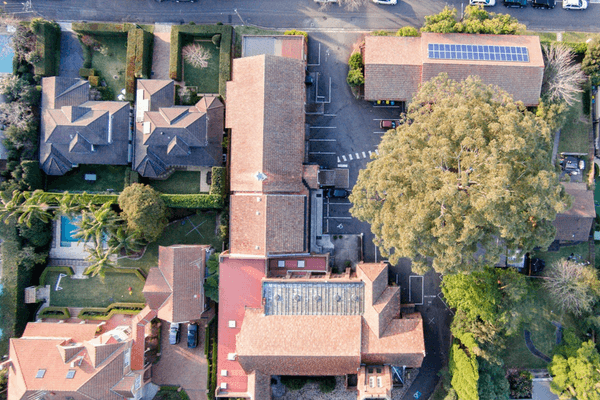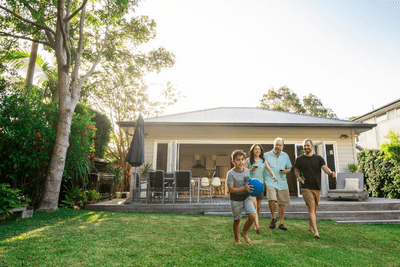
Share
Help to Buy scheme expanded: $100k/$160k income caps, property caps to $1.3M Sydney. What first-time buyers need to know about shared equity assistance.
The dream of homeownership feels increasingly out of reach for many Australians, with median house prices soaring and wage growth struggling to keep pace. However, the federal government’s significant expansion of the Help to Buy shared equity housing scheme offers renewed hope for thousands of aspiring homeowners who previously fell outside the programme’s eligibility criteria.
The expanded scheme represents one of the most substantial changes to first home buyer assistance in recent years, with dramatically increased income and property price caps designed to reflect today’s housing market realities. For many Australians who have been saving diligently but struggling to accumulate sufficient deposits, these changes could be the key to unlocking homeownership years earlier than traditional saving methods would allow.
Understanding what these changes mean for your specific circumstances, and how to position yourself to take advantage of the expanded scheme, could transform your path to homeownership. With the government now investing $6.3 billion in shared equity assistance, the opportunity to access government support for your first home purchase has never been more accessible.
Understanding the Help to Buy scheme expansion
The Help to Buy scheme expansion delivers substantial increases across both income thresholds and property price caps, fundamentally changing who can access government shared equity assistance. These adjustments acknowledge the reality that housing affordability pressures have intensified significantly since the original scheme parameters were set.
Income eligibility has seen meaningful increases that recognise today’s earning capacity requirements. Single applicants can now earn up to $100,000 annually, up from the previous $90,000 limit. Couples and single parents benefit from a substantial jump from $120,000 to $160,000 in combined household income. This $40,000 increase for couples represents recognition that dual-income households need higher thresholds to manage both living costs and housing expenses in Australia’s major markets.
Property price caps have received even more dramatic adjustments, with Sydney leading the increases. The harbour city’s cap has jumped from $950,000 to $1.3 million – a $350,000 increase that opens access to significantly more properties across Sydney’s diverse suburbs. Brisbane buyers benefit from a $300,000 increase, with caps rising from $700,000 to $1 million, while Melbourne’s limit increases from $850,000 to $950,000.
These property price adjustments are now tied to median house prices rather than median dwelling prices. This technical change expands housing options by focussing on house values specifically. The government estimates that approximately two-thirds of properties nationwide now fall under the revised caps, compared to a much smaller proportion under the original limits.
Who benefits from the expanded eligibility criteria
The expanded criteria create opportunities for a much broader range of Australians to access shared equity assistance, particularly those in middle-income brackets who previously earned too much for assistance but too little to compete effectively in expensive property markets.
Consider Emma, a 29-year-old marketing manager in Sydney earning $95,000 annually. Under the original scheme, her income exceeded the $90,000 limit by $5,000, excluding her from assistance despite facing the same affordability challenges as someone earning slightly less. The new $100,000 threshold now includes Emma and thousands of others in similar situations, recognising that higher incomes in expensive cities don’t necessarily translate to housing affordability. Couples and families see even more substantial benefits from the expanded criteria. Take James and Sarah, both teachers in Brisbane with a combined income of $145,000. The original $120,000 household limit excluded them entirely, despite their moderate incomes relative to Brisbane’s median house prices. The new $160,000 threshold not only includes them but provides breathing room for future salary increases without losing eligibility.
Single parents face unique housing affordability challenges, often supporting children while managing housing costs on a single income. The expanded criteria particularly benefit this group, with single parents now able to earn up to $160,000 and still access assistance – recognition of the additional financial pressures they face compared to single applicants without dependents.
How the shared equity housing scheme works in practice
The Help to Buy scheme operates on a straightforward shared equity model where the government becomes a silent partner in your property purchase. The government contributes either 30 per cent for existing homes or 40 per cent for new builds. This government contribution directly reduces both your required deposit and ongoing mortgage obligations, making homeownership accessible with significantly less upfront capital.
For a practical example, consider purchasing an $800,000 existing home in Melbourne. Under the scheme, the government would contribute $240,000 (30 per cent), leaving you to finance $560,000. With a traditional 10 per cent deposit, you’d need $56,000 upfront rather than $80,000. Your mortgage payments would be calculated on the reduced $560,000 loan amount rather than the full purchase price.
The government’s stake remains proportional to its initial contribution throughout your ownership period. If your property appreciates to $1 million, the government’s share increases to $300,000, while your equity grows to $700,000. Conversely, if values decline, both parties share the loss proportionally, providing some downside protection for homeowners.
Importantly, you retain full control over the property during ownership, including renovation decisions and rental arrangements if circumstances require. The government’s role remains passive until you decide to sell, refinance, or buy out their share. This ensures your homeownership experience mirrors traditional ownership despite the shared equity arrangement.
Comparing the expansion to previous housing assistance
The Help to Buy expansion represents a fundamental shift from traditional first home buyer assistance, moving beyond one-time grants to ongoing partnership arrangements that scale with property values. Unlike first home owner grants that provide fixed amounts regardless of purchase price or future value changes, shared equity schemes create long-term government investment in individual homeownership outcomes.
State-based shared equity programmes exist across Australia, but typically operate at smaller scales with more restrictive criteria. The federal scheme’s $6.3 billion investment represents unprecedented scale, with 40,000 places available over four years – significantly larger than any individual state programme. This scale creates potential for meaningful impact on first home buyer participation rates across the country.
The expansion also integrates with the government’s broader $33 billion housing package, which includes supply-side measures like social housing construction and planning reform. This dual approach – supporting both demand through shared equity and supply through construction investment – represents more comprehensive housing policy than previous assistance programmes that focussed primarily on demand-side grants.
However, policy analysts note that demand-side assistance can potentially contribute to price pressures if not balanced with adequate supply increases. The government’s emphasis on building more homes alongside buyer assistance suggests awareness of this dynamic, though the ultimate effectiveness will depend on implementation and supply response over time.
What this means for housing affordability
The Help to Buy expansion addresses immediate affordability barriers for eligible buyers while forming part of broader housing policy intended to tackle underlying supply shortages. For individual buyers, the scheme can reduce time to homeownership by five to ten years compared to traditional saving approaches, particularly valuable given ongoing property price growth in major markets.
Research on shared equity schemes internationally suggests they most effectively assist buyers who can service mortgage payments but struggle with deposit accumulation – precisely the demographic targeted by the expanded criteria. By reducing deposit requirements from typically 20 per cent to potentially 10 per cent or less, the scheme removes the primary barrier many aspiring homeowners face.
However, shared equity assistance operates within broader market dynamics that continue influencing overall affordability. If increased buyer participation drives additional demand without corresponding supply increases, some price pressure could result. The government’s concurrent investment in housing supply aims to mitigate this risk, though the timing and scale of supply responses will prove crucial.
Long-term affordability improvement requires sustained attention to supply constraints, planning processes, and infrastructure investment that supports housing development. The Help to Buy expansion provides immediate relief for eligible buyers while these structural issues receive attention through other policy measures.
Practical guidance for eligible buyers
Preparing for the Help to Buy scheme requires understanding both eligibility requirements and optimal positioning strategies to maximise your chances of successful participation. While the scheme hasn’t yet commenced operations, eligible buyers can take several preparatory steps to ensure readiness when applications open.
Financial preparation remains crucial despite reduced deposit requirements. Lenders will still assess your borrowing capacity based on the mortgage portion you’ll be financing. This requires demonstration of stable income, manageable debt levels, and adequate savings for legal costs, inspections, and moving expenses beyond the deposit itself.
Credit history optimisation becomes particularly important given the competitive nature of shared equity places. With 40,000 positions available over four years, ensuring your credit record accurately reflects your financial responsibility can strengthen your application. Obtaining credit reports and addressing any discrepancies or outstanding issues positions you advantageously.
Property research within your price cap range allows identification of suitable areas and property types before scheme launch. Understanding local markets, transport connections, and future development plans helps narrow your search area and enables quick decision-making when opportunities arise.
Consider engaging mortgage brokers or financial advisers familiar with shared equity schemes to understand how the arrangement integrates with your overall financial strategy. These professionals can provide insights into optimal loan structuring and future refinancing options that align with your long-term plans.
Regional and market-specific impacts
The property price cap increases create varied impacts across different markets, with some regions seeing more dramatic expansions in available properties than others. Understanding these regional variations helps buyers assess their options and potentially consider alternative locations within their budget parameters.
Sydney’s $350,000 cap increase represents the largest absolute change, opening access to suburbs previously beyond reach for scheme participants. Areas like the Central Coast, parts of Western Sydney, and some Inner West suburbs now fall within reach, dramatically expanding location options for eligible buyers. This geographic expansion could influence migration patterns within Sydney as buyers access previously unaffordable areas.
Brisbane’s jump to $1 million creates opportunities across most of the metropolitan area, including many suburbs within 20 kilometres of the CBD that were previously excluded. This change particularly benefits young professionals and families seeking proximity to employment centres without compromising on housing quality or size.
Melbourne’s more modest increase to $950,000 still opens additional suburbs, particularly in growth corridors where new housing developments align with the scheme’s emphasis on supporting new builds through higher government contributions. The 40 per cent government stake in new properties provides particular value in these emerging areas.
Regional centres benefit from the scheme’s national scope, with local price caps adjusted to reflect regional market conditions. This ensures the scheme remains accessible to regional buyers while acknowledging the different price dynamics outside major metropolitan areas.
The Help to Buy scheme expansion represents a significant opportunity for thousands of Australians who previously found themselves in the housing affordability gap – earning too much for traditional assistance but too little to compete effectively in expensive property markets. With income thresholds increased to $100,000 for singles and $160,000 for couples, and property caps rising dramatically across major cities, the scheme now reflects the reality of contemporary housing markets.
For eligible buyers, the expanded criteria offer a genuine pathway to homeownership that could reduce the time to purchase by five to ten years compared to traditional saving approaches. The government’s willingness to invest $6.3 billion in shared equity assistance demonstrates recognition that housing affordability requires substantial policy intervention beyond market forces alone.
While the scheme awaits implementation, prospective participants can use this time productively by optimising their financial position, researching eligible properties, and preparing documentation for quick application processing. The expansion of property price caps means many more suburbs and housing options now fall within reach, creating opportunities to reconsider location preferences and housing types.
Further questions
What are the new Help to Buy income and property limits?
How does the government shared equity scheme reduce my deposit requirements?
When will the expanded Help to Buy scheme be available to apply?
What happens when I want to sell my property under the scheme?
Can I use Help to Buy with other first home buyer assistance programmes?
This is general information only and is subject to change at any given time. Your complete financial situation will need to be assessed before acceptance of any proposal or product.





